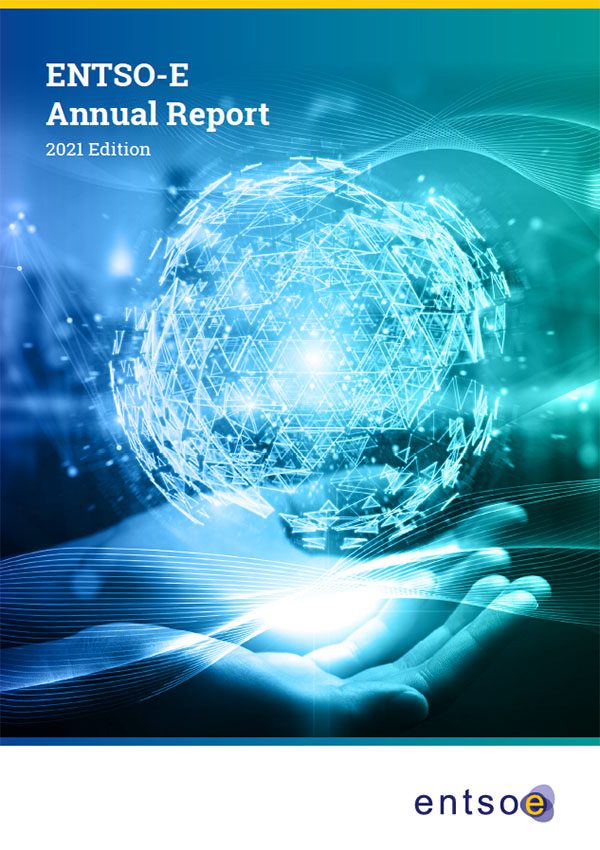ACER
List of abbreviations
Agency for the Cooperation of Energy Regulators
aFRR
Automatic Frequency Restoration Reserves
AISBL
Association Internationale Sans But Lucratif (International Not-For-Profit Association)
CACM
Capacity Allocation and Congestion Management
CBA
Cost-Benefit Analysis
CCR
Capacity Calculation Region
CEF
Connecting Europe Facility
CENELEC
European Committee for Electrotechnical Standardisation
CGM
Common Grid Model
CGMES
Common Grid Model Exchange Standard
CIDM
Congestion Income Distribution Methodology
CIM
Common Information Model
CNC
Connection Network Code
CNEC
Critical Network Element
CoNE
Cost of New Entry
CSAM
Methodology for Coordinating Operational Security Analysis
CZC
Cross-Zonal Capacity
DA
Day Ahead
DCC
Demand Connection Code
DERs
Distributed Energy Resources
DSO
Distribution System Operator
EAS
ENTSO-E Awareness System
EB Reg.
Electricity Balancing Regulation
ENTSOG
European Network of Transmission System Operators for Gas
ERAA
European Resource Adequacy Assessment
ETIP SNET
European Technology and Innovation Platform Smart Networks for Energy Transition
EU
European Union
FCA
Forward Capacity Allocation
FCR
Frequency Containment Reserve
FSKAR
Financial Settlement of KΔf, ACE and ramping
GHG
Greenhouse Gases
GL
Guideline
GRIT
Greece–Italy
GUI
Graphical User Interface
HAR
Harmonised Allocation Rules
HVDC
High-Voltage Direct-Current
iAC
Independent Advisory Council
ICS
Incident Classification Scale
ID
Intraday
IEC
International Electrotechnical Commission
IGCC
International Grid Control Cooperation
IGDs
Implementation Guidance Documents
IGM
Individual Grid Model
IN
Imbalance Netting
ITC
Inter Transmission System Operator Compensation
JAO
Joint Allocation Office
KORR
Key Organisational Roles and Responsibilities
LTTR
Long-Term Transmission Rights
MAF
Mid-term Adequacy Forecast
MARI
Manually Activated Reserves Initiative
mFRR
Manual Frequency Restoration Reserves
MoP
Manual of Procedures
MoU
Memorandum of Understanding
NC ER
Emergency and Restoration Network Code
NECP
National Energy and Climate Plan
NEMO
Nominated Electricity Market Operator
NRA
National Regulatory Authority
OPC/STA
Outage Planning Coordination/Short Term Adequacy Assessment Process
OPDE
Operational Planning Data Environment
PCI
Project of Common Interest
PCN
Physical Communication Network
PECD
Pan-European Climate Database
PEVF
Pan-European Verification Platform
PICASSO
Platform for the International Coordination of Automated Frequency Restoration and Stable System Operation
PRA
Probabilistic Risk Assessment
Prosumers
Neologism that designates producers and consumers
RCC
Regional Coordination Centre
RDI
Research, Development and Innovation
RES
Renewable Energy Source
RfG
Requirements for Generators
RGCE
Regional Group Continental Europe
RR
Replacement Reserves
RSC
Regional Security Coordinator
SAFA
Synchronous Area Framework Agreement
SAT
Site Acceptance Test
SDAC
Single Day-Ahead Coupling
SEE
South-East Europe
SEleNe CC
South East electricity Network – Coordination Center
SET
Strategic Energy Technology
SIDC
Single Intraday Coupling
SLA
Service-Level Agreement
SO
System Operation
SOC
System Operation Committee
SOGL
System Operation Guideline
SOR
System Operation Region
SSDLC
Secure Software Development Lifecycle
TCA
Trade and Cooperation Agreement
TERRE
Trans-European Replacement Reserves Exchange
TP
Transparency Platform
TRL
Technology Readiness Level
TSO
Transmission System Operator
TYNDP
Ten-Year Network Development Plan
VoLL
Value of Lost Load
WA
Working Arrangement
WAMS
Wide Area Monitoring System
Download
ENTSO-E Annual Report 2021
This Annual Report covers the period January to December 2021. It focuses on the legal mandates given to ENTSO-E and on the Pan European All TSOs tasks, facilitated by ENTSO-E. The activities covered in this report were performed thanks to the 42 members of ENTSO-E who provide its financial resources and whose staff provides expertise to the Association.
Chapters:
- System Operation
- Market
- System Development
- Transparency Regulation
- Research, Development and Innovation
- Cybersecurity, Interoperability and Data
- TSO–DSO partnership and demand side flexibility



